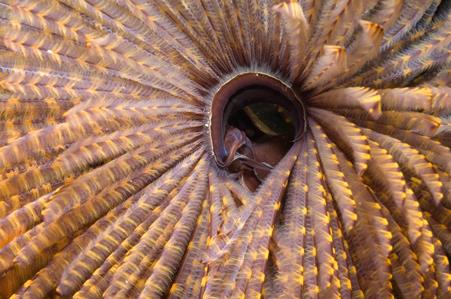General Description
In members of this genus thoracic and abdominal interramal eye spots present while radiolar eyes are absent. Abdominal neurochaetae are arranged in a C-shape. In living specimens, identification is easy since the radiolar crown when expanded underwater appears as a tuft, not obviously helical (whereas in the introduced species Sabella spallanzanii it is a very obvious helix). Preserved specimens are more difficult to distinguish and require careful observation of chaetal arrangement. Body up to about 1 cm long.
Biology
Several different colour forms of this common, large, fan worm occur around south-eastern Australia. In eastern Victoria, specimens have a pale to white fan, while further west and in Port Phillip Bay specimens are brown-orange. Preliminary DNA studies indicate that several new species might one day be described.
Habitat
Port Phillip Bay and other similar coastal habitat, inshore and continental shelf.
Reefs
Soft substrates
Distribution guide
Southern Australia.
Species Group
Depth
Shore (0-1 m)
Shallow (1-30 m)
Water Column
Max Size
1 cm
Diet
Plankton or particles
Commercial Species
No
Global Dispersal
Native to Australia
Identify
Conservation Status
- DSE Advisory List : Not listed
- EPBC Act 1999 : Not listed
- IUCN Red List : Not listed








